Varicose Veins
Varicose Veins are distended veins of the legs that people have the wrong impression of causing just appearance problems. Varicose veins is a pathological problem that can have serious complications sometimes and need to be examined by a specialist (vascular surgeon) in order to establish a proper diagnosis. He will examine you clinically and with ultrasound (colour duplex) so as to answer the following questions: 1. Why are there varicosities in your legs? (The cause) 2. Are they the “dangerous” kind or are they simple superficial veins causing just a dysmorphia? 3. What treatment is suitable for you? 4. What to expect and what to be alert about (to recognise any complication).
The two worst complications of varicose veins are bleeding and thrombosis. Bleeding is devastating the first time in people who cannot bare the sight of blood because in just a few seconds the amount of blood accumulating on the floor is huge and when the patient looks down sees this huge blood stain and goes into panic. Usually the patient starts screaming for help and wastes time and looses more blood. The past decade from personal experience in my office there is one old lady that died in her sleep from massive bleeding from varicosity and two middle-aged patients (one man and one woman) that were taken to the hospital with hematocrits < 20 after massive bleeding. The man was swimming in a beach when a small fish bit him and after a while he realised the water was turning red. He got out in panic, rolled a towel around the leg and asked for help. Someone offered to drive him to the hospital that was >20 min away. The patient told me that he had to change 3 large towels in his way to the hospital because they got soaked with blood. When he reached the hospital he was pale and week and they found the Hct<20%. He was hospitalised.
After seeing these patients in my medical office I thought that I must inform meticulously every patient with varicose veins (and spider veins) how to react in the sight of bleeding from a vein. The solution is very simple but lifesaving : pressure. So here are the directions:
STEP 1 : You have to press the point of bleeding that in most cases is like the tip of a pen in diameter (very small) and is very easy to stop it with just one finger. When you put your finger to the bleeding spot and you stop it, then you have all the time in the world to ask for help safely. You find someone to help you and proceed to the next step.
STEP 2 : In order to take your finger off the wound, you need to put some kind of bandage to keep the pressure on the blinding site. You need a gauge or cotton or even a clean cloth to make a small pad and then a bandage or a long strip of cloth or a special medical tape or a simple tape if you are in the country.
STEP 3 : Be careful! This step is essential = this is the step that usually is not done by patients and it is necessary for the bleeding to stop. You have to elevate the leg for 15 min so the vein pressure drops and allows the hemostasis to take place (hemostasis=clotting in the site of bleeding and sealing of the vessel).
The other devastating complication is thrombosis (clotting of the blood inside the vein and blockage of the vessels lumen). Thrombosis has three signs that are useful for recognising it. The vein in the section that is thrombosed turns red or dark in appearance, is hard when you touch it and there is pain when you press it. Pain+red+hard vein = thrombosis. Immediately ask for medical advise. Thrombosis in the leg usually is a simple situation but in a few cases the thrombus propagates in the deep vein system and then it can cause pulmonary embolism if the thrombus reaches the lungs which is a devastating potentially lethal situation. So, superficial vein thrombosis is usually not dangerous but in order to avoid any such situation the advise is to be examined by an expert (vascular surgeon) and he will give you instructions how to make sure you will not risk an embolism.
Besides the two major complications (bleeding and thrombosis) the varicose veins cause a number of complications and symptoms. Patients with varicose veins suffer from heavy legs, tired legs, cramps, edema, burning sensation, especially in the summer. After years of having superficial vein insufficiency the skin of the leg is infected, it turns dark and stiff and sometimes an ulcer develops.
If you see signs of vein disease in your legs (swelling, enlarged veins, clusters of spider veins near the ankle, dark skin near the ankle) then you should seek medical advise from an expert. If the expert finds a small problem he will give you advice on how to protect your veins from getting worse (usually the conservative treatment includes everyday walking, avoiding prolonged standing, avoiding high temperatures, wearing elastic stalking, taking food supplements or applying ointments). If the problem is a bit more serious and there is a chance of having some kind of complication then he will offer you a medical treatment that best suits your problem (these treatments are in order of significance endovascular laser ablation, foam sclerotherapy, surgery).
Until the beginning of the new millenium the only treatment for varicose veins was surgery. Then at 2001 Dr Tessari reported his results with foam sclerotherapy that was efficient for larger veins than the spider veins and we now have > 20 years of experience with this method that works great for varicosities. At the same time there was the discovery of laser ablation for the saphenous vein (the main vein of the superficial vein system of the leg) which was a revolution and evolved during a decade and from 2010 it replaced totally the classic surgery (saphenectomy) due to its many advantages. So now it has been > 20 years for the laser ablation experience and after 2010 it is the “golden standard” for saphenous vein insufficiency. The advantages of the laser in respect to surgery are: 1. No need for general anesthesia (usually only local anesthesia or mild sedation). 2. Less pain and fast return to activities 3. Less trauma and scars 4. Less recurrence .
New methods are reported as time goes by. Nowadays we have and other methods of ablation using steam, using mechanochemical methods (rotating catheter with sclerosant) and non thermal techniques like the glue (cyanoacrylate glue inside the saphenous vein). All these methods are evolving and gradually are used for the treatment of superficial vein insufficiency.
Frequent questions from patients:
- After laser ablation of my saphenous vein, when can I return to work? Answer : It depends on the job. Theoretically you can return even the same day but if you are a construction worker for example it is advised to restrain 2 weeks from your work.
- After laser ablation do I have to wear elastic stalkings? Answer : It is advised to wear them for at least 2-3 days and up to a month in some cases, it depends on the compliance of the patient and the degree of the problem.
- Can I proceed to vein laser ablation in the summertime ? Answer : Yes, it can be done, with the limitation of not to be exposed to the sun for 20-30 days after the procedure. As you can imagine most people prefer to do it from September to June but there are some people for instance people coming in for other countries (mainly Greeks that leave abroad or medical tourists) that do it in the summer.
- I have allergy to latex and cannot wear shocks. What can I do? Answer : About 50% of the patients have allergy, itching or discomfort when wearing elastic stalkings and cannot tolerate them. This is very unfortunate because the elastic stalkings is the mainstay of conservative treatment for vein insufficiency. Nevertheless life goes on and we are focused on alleviating the symptoms and protecting the legs from complications by other means (exercise, cold pads or cooling creams, food supplements or medication, etc).
- Can the elastic stalkings do harm? (NOTE: a very important question that very few people ask). Answer : There are two situations that a tight elastic stalking can cause harm: 1. In people with arteriopathy (arteries in the legs with stenosis or blockage that compromise the free flow of blood towards the leg) - usually it concerns diabetics and smokers - in these patients that the amount of blood reaching the periphery is low imagine if you constrict more the arteries with the shocks and reduce further the blood flow it can result in schema or even tissue loss (gangrene). So it is of outmost importance that the vascular surgeon evaluates the arterial flow as much as the vein circulation in order to be able to give the proper advise. If a neighbour suggests you wear stalkings for your vein problem it may not be the best option for you - always take an experts advise (vascular surgeon). 2. If your vein insufficiency starts from the saphenofemoral junction (high level of leg = in the groin) and you wear a stalking that ends a little above the knee then you leave exposed the most important section of the insufficient vein and above all that if there is a tight elastic band at the end of the stalking that applies pressure the wrong way on the vein it may trigger a thrombophlebitis (topical thrombosis of the vein). So it is very important to wear the correct size and pressure stalkings.
- Is it safe to take the medication that is used for the veins ? Answer : These “drugs” are in the category of food supplements and are very safe. They contain usually fruits or plants (like oranges or grapes) and the only side effects reported are mainly from the gastrointestinal track.
- Should I take anticoagulants in order to avoid a thrombosis? Answer : These drugs have a great effect (anticoagulation = they prevent thrombosis, embolism, heart attacks, stroke etc) but they have a very bad effect also (they cause bleeding sometimes severe or lethal). So it is a very important decision that needs to be taken and weight the benefit over loss and then proceed to such a medical treatment. And of course it is undoubtedly the decision of an expert (vascular surgeon) after taking in consideration all the data for a specific patient. This is not a decision for you to take.
- I have varicose veins and others tell me to treat them after I am finished with all my pregnancies and others tell me to fix them before I get pregnant. What should I do? Answer : In the old days that the treatment was with classic surgery we advised the patient to come after all the pregnancies because if we treat the veins before there was a big chance of reccurency (the leg was filled with varicosities again). Now with the laser ablation it is the opposite - we advise to treat the varicosities before the pregnancy because there is a small chance or reccurency and the patient is relieved from the symptoms (that are exaggerated during pregnancy) and has less chance of superficial thrombosis.





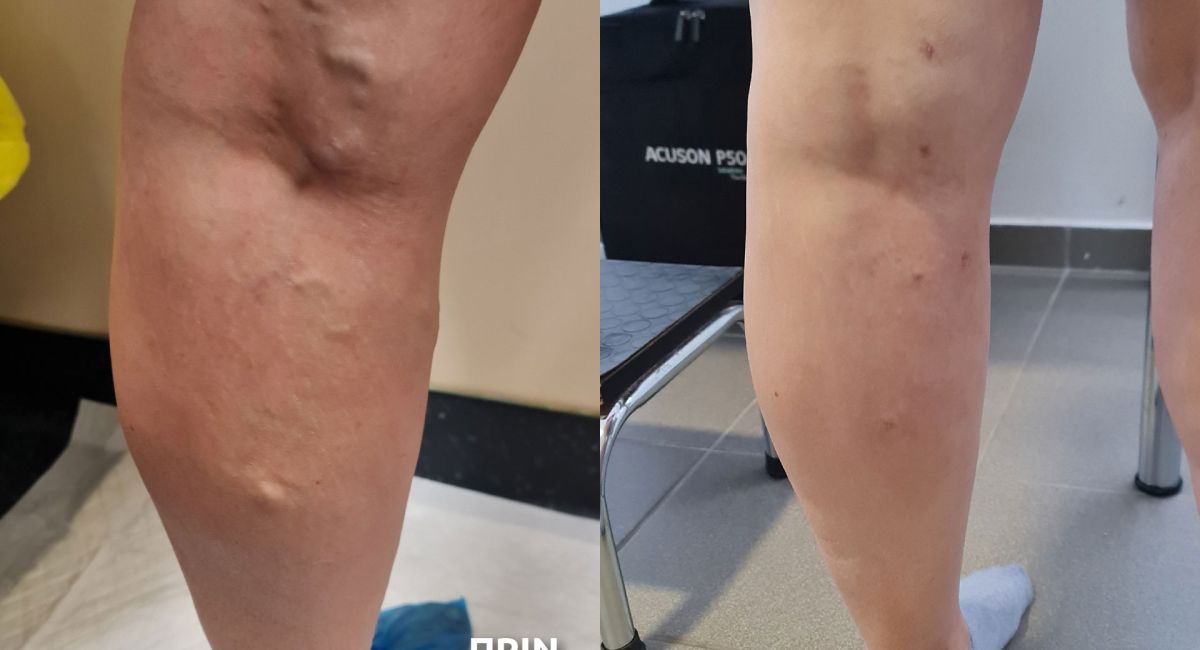

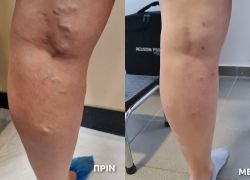
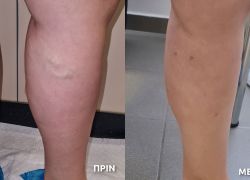
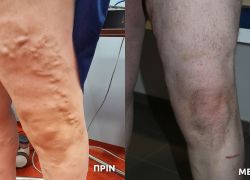
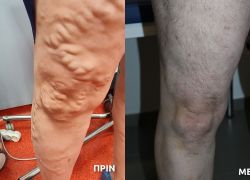
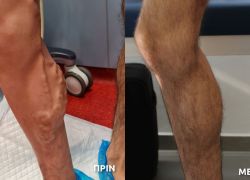
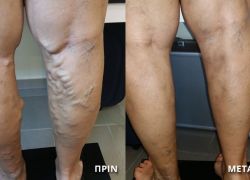
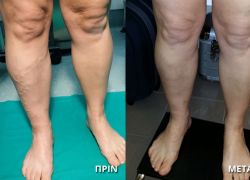
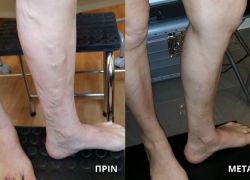
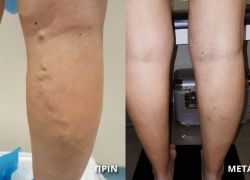
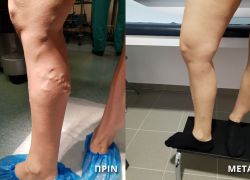
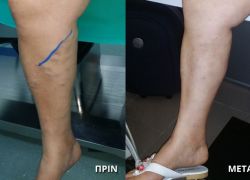
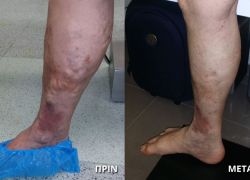
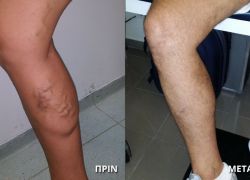
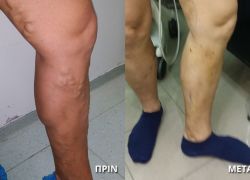
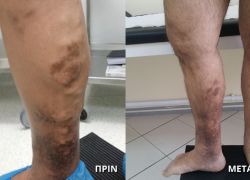
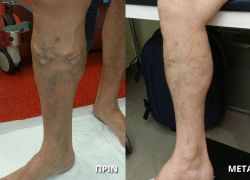
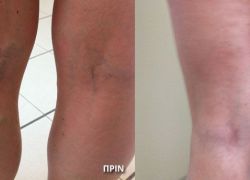
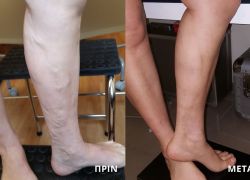
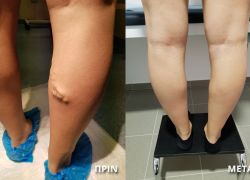
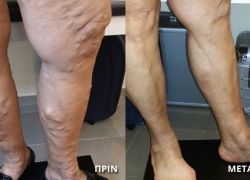
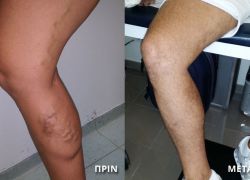
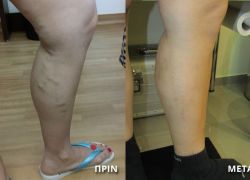
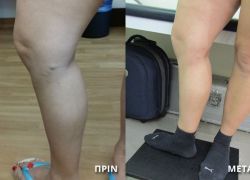
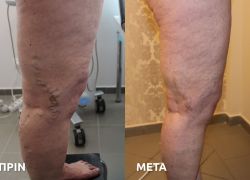
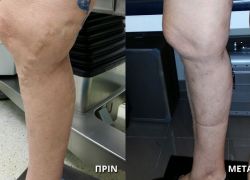














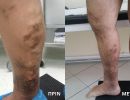

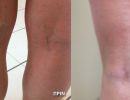

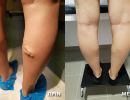







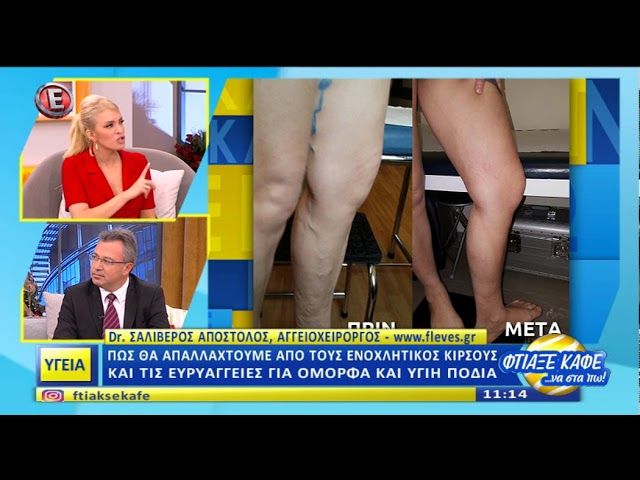
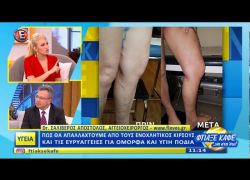

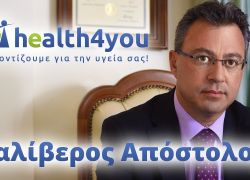
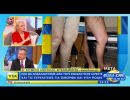


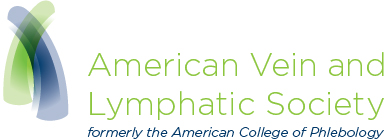



Follow Us
Contact Us
Pl. Vasos Katraki 6, 16675 Glyfada
+30 210 9648722